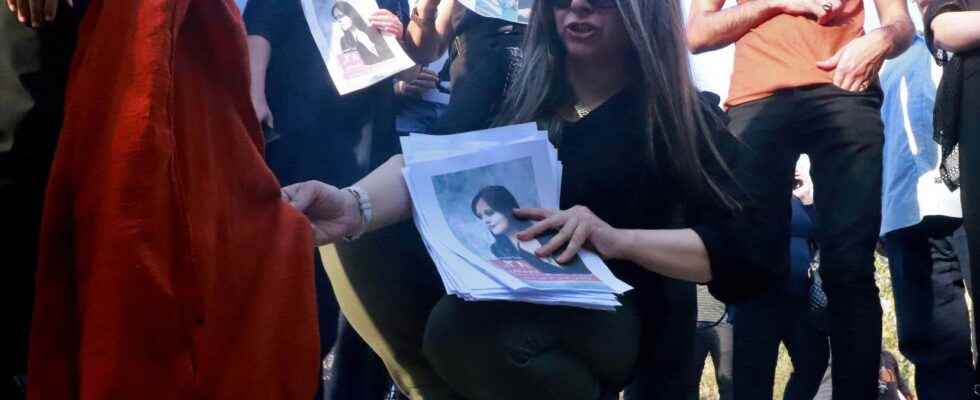In Iran, the fate of Mahsa Amini, who died after being arrested in Tehran by the morality police, is shaking the whole country. A few days after his death, the anger continues to spread in the street as well as on social networks, where several women film themselves burning their veils or cutting their hair in protest.
The 22-year-old Kurdish woman has quickly become a symbol of the fight against the brutal methods of the morality police in Iran, which are increasingly criticized, as well as the increased repression of the regime of President Ebrahim Raisi.
Visiting Tehran with her family, Mahsa was arrested on September 13 for “wearing inappropriate clothes” by vice police because she did not wear her veil properly. You should know that since the 1979 Islamic Revolution in Iran, the law requires that all women, regardless of their nationality or religion, wear a veil that covers the head and neck while concealing the hair.
Tasked with enforcing the Islamic Republic of Iran’s strict women’s dress code, the vice police further prohibit women from wearing short coats above the knee, tight pants and holey jeans as well as colored outfits alive, among others.
Authorities said on Thursday that the girl had been arrested along with other women to receive “instructions” on dress rules. She would then “suddenly suffered from a heart problem”. Plunged into a coma from then on, Mahsa died three days later in hospital, on September 16, according to state television.
She was buried on Saturday in her hometown, Saghez, where residents threw stones at the governor’s seat and shouted slogans, demanding detailed investigations into the case.
Authorities deny responsibility
While crowds have been storming the streets since Saturday, the police again rejected any responsibility for the death on Monday. In the evening, in the center of Tehran, hundreds of people chanted slogans against the authorities, and some of them took off their veils in protest.
In videos posted on social media, protesters can be heard shouting “Death to the dictator”, in reference to Supreme Leader Ayatollah Ali Khamenei.
Activists call Mahsa Amini’s death “suspicious”, but Tehran police say there was “no physical contact” between police and the victim. On the day of the young woman’s death, state television even broadcast a short surveillance video showing a woman presented as Mahsa Amini collapsing in the police station after a discussion with a policewoman.
On Monday, the victim’s father, Amjad Amini, said the “video was cut” and that his daughter was “belatedly transferred to hospital”.
A new surge of resistance in Iran
“We don’t want to die”, “We are not hashtags, we are human beings”, “Dear #MahsaAmini, you are not dead, your name has become a symbol”, can we read on the placards of young women who have removed their veils to protest against the alleged murder of Mahsa Amini.
“We don’t want to die”.
“We are not hashtags, we are human beings”
“Dear #MahsaAmini you didn’t die, your name becoming a symbol”
These young women remove their hijab in protest against the murdering of 22 year old woman who was killed by hijab police in Iran.#مهسا_امینی pic.twitter.com/s4cgE0SD5q
— Masih Alinejad ????️ (@AlinejadMasih) September 18, 2022
Many filmmakers, artists and sports, political and religious figures have also expressed their anger on social networks after the death of the young woman.
On Twitter, the Persian hashtag #Mahsa_Amini was the top trending hashtag on Sunday, with nearly 1.5 million tweets.
“Mahsa Amini’s situation is an example of an intentional crime. The systematic repression of Iranian women under the pretext of enforcing the headscarf law by the vice police is a crime”, lambasted the activist for freedom of expression in Iran Hossein Ronaghi.
“Mahsa is more alive today than us”, because “we are asleep, without reaction in the face of this endless cruelty, we are accomplices in this crime”, indicated for his part the filmmaker Asghar Farhadi, winner of two Academy Awards. best foreign film.
Almost all of the Iranian print media devoted Sunday’s front page and entire pages to the drama.
Mahsa’s death comes amid controversy over morality police, whose violent methods were heavily criticized last July after a young girl was arrested in front of her mother.
With Agence France-Presse
